Office and building automation is a key trend in modern buildings, enabling intelligent and sustainable building management. Through automation, temperature, lighting, energy use and security systems can be easily managed, optimised and controlled.

Thanks to building automation, building owners and workers can achieve an improved working environment and efficiency, as well as reduced maintenance costs and increased energy efficiency. Advanced automation systems also provide additional benefits such as remote control and intelligent data analysis.
Building automation
Our Budapest office was fully automated to take advantage of the benefits of automation, while also providing an opportunity to demonstrate such a system. The central controller for the system is a Siemens PLC, and we have tried to integrate as many different bus system device types as possible for the demonstration. The most important elements are listed below.
1. Automation of lighting and shading
The system components include KNX presence detectors with integrated light meter, external motorised louvre shades and Dali-controlled adjustable LED light sources. The central PLC communicates with the occupancy sensors via a KNX/Profinet gateway and is able to connect directly to the DALI bus devices (light sources). The system controls the louvre shades and adjustable light sources based on the values measured by the light meter to provide a set constant illumination value for the occupants.
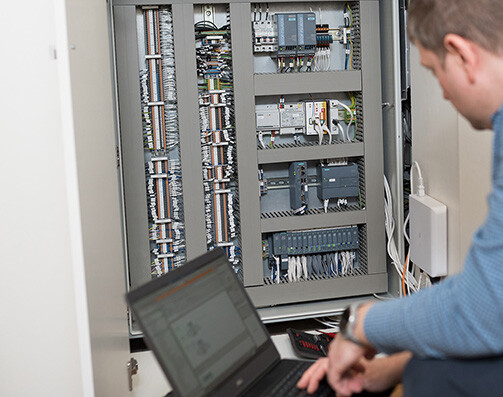
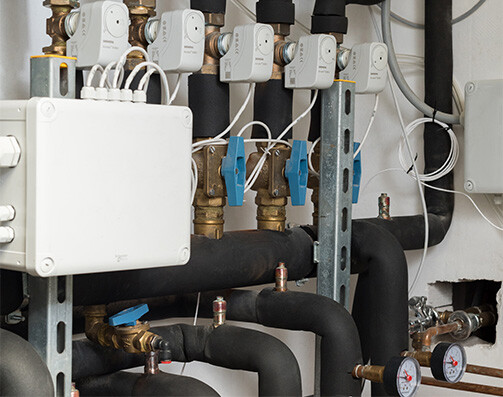
2. Cooling, heating automation
A cooling heating air handler and an air-to-water heat pump (Modbus TCP) have been installed on the flat roof and an internal gas boiler (Opentherm) is also part of the system. Evidently, there are sensors in such a system, including outdoor weather station (KNX), indoor combi sensors (temperature, humidity, CO2 level) (KNX), numerous thermometers, pressure switches. To control the flow we need valves and pumps; but internal cooling and heating units are also necessary, such as surface heating, fan-coil or air conditioning systems. The centralised control acts as the musical conductor of an orchestra, ensuring the cooperation of the parts and ensuring the constant ideal temperatureand air quality. This solution illustrates the complexity of the task and the ability to integrate the various components communicating via different interfaces into a single system.
3. Comfort services
In the office, there are several touchscreen panels, including general purpose tablets and industrial operator panels. In addition to the parameterisation of automated controls, there is also the possibility of direct intervention in manual mode. These panels can also provide a number of additional conveniences, for example, in the case of a meeting room, it might be useful to store different lighting profiles, and the order of use of the meeting room can be managed. If required, it is even possible to integratea time and attendance and access control system.
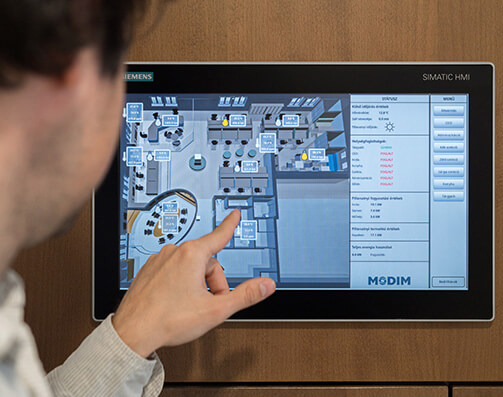
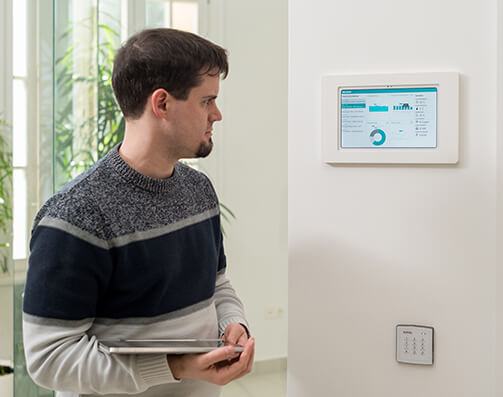
4. Data collection
Through continuous feedback, we have access to consumption values, the running hours of our assets (maintenance scheduling), fault codes, and the occupancy of the premises. We have also added a 30 kWp solar farm to our system, with data collection points installed at several points, providing realtime data on the current consumption/production of our office and production unit, which we can use to optimise our energy efficiency.
People who help in building automation
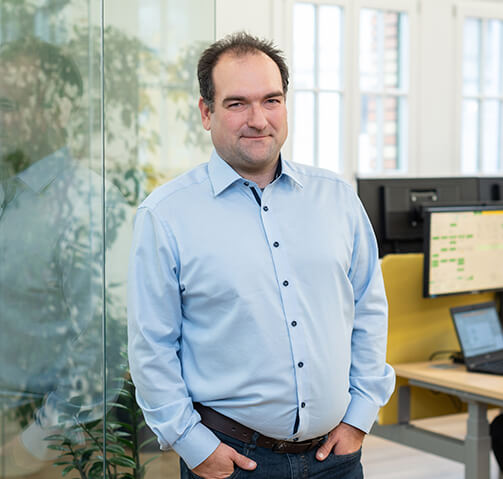
Ferenc is one of the founders and a managing director of our company, Ferenc graduated from the Faculty of Electrical Engineering at BME. Over the years, he has gained valuable knowledge in the fields of electrical design, and automation (requiring a wide range of skills), which is complemented by a comprehensive knowledge of standards. He considers it fundamental that his work meets the highest professional standards, paying attention to detail and successfully completing projects.
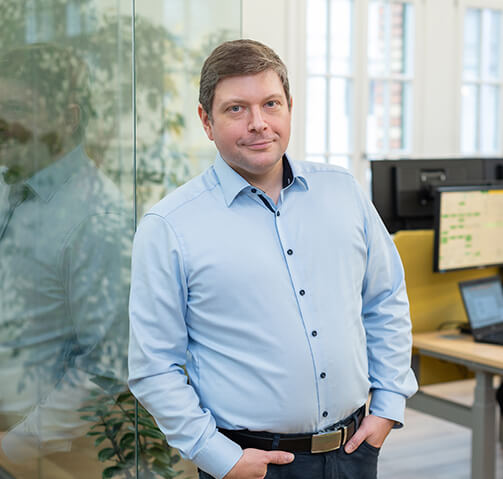
Lajos, one of the founders and a managing director of our company, Lajos graduated from the Faculty of Electrical Engineering at the BME. His main area of expertise is industrial software development, but his qualifications as a registered engineer prove that electrical engineering is not far behind. Innovation isa major part of his life and he is constantly striving for improvement. He deems it a cornerstone of the company's success that he tries to build and nurture good and enjoyable professional relationships.
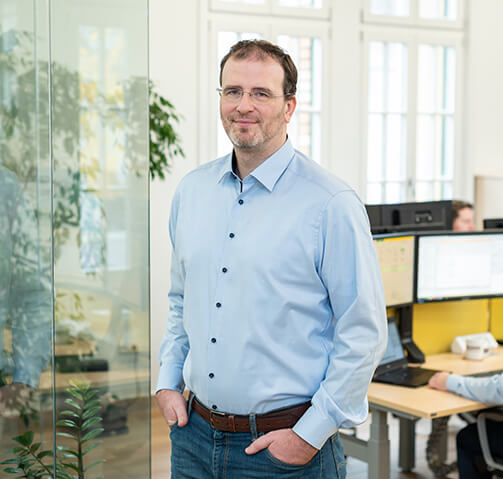
Peter, a graduate in electrical engineering from BME, is one of the founders and managing directors of our company. His professional focus is the design of control and manufacturing support software at functional and architectural level. He has experience in the preparation and implementation of major investments, supported by his economics degree. Sustainability and the use of renewable energy sources in the company's activities are important to him.

Martin joined our company in 2017 and is now the head of our software development department. With a degree in mechatronics engineering and economics, he has a wide range of professional skills, backed up by his drive for continuous improvement. As an excellent team player, his highly motivated approach and his belief in creative solutions ensure that his projects are implemented to the satisfaction of our customers.
The cooperation process

Survey and offer
We discuss the specifics with the customer, then we make a survey on the spot. We provide a preliminary offer, if necessary, followed by a clarification consultation to finalise the offer.

Design, production
In collaboration with the mechanical and ventilation contractors, we design the system, followed by software development and the production of the control cabinets.

On-site installation, commissioning
We deliver the preassembled cabinets. We carry out the necessary electrical installations on site, then we proceed top functional tests and finally the trial run.
Frequently asked questions
Our colleagues will contact you by e-mail or telephone to arrange an appointment. We will first discuss the job in broad terms by phone or online, followed by an on-site survey and then we send you the quotation.
There is no charge for the submission of the offer, nor for the consultation and survey relatedto the submission of the offer in Hungary.
It is better to link building automation to new construction or renovation and start the process at the design stage, thus avoiding compromises and subsequent demolition/restoration.
Our scope of work is limited to the control (electrical) side of automation, but we work closely with mechanical and aeronautical engineering partner companies with whom we can also undertake generator design.
Home automation systems are designed specifically for home use. In a workplace, the demand and reliability requirements are significantly higher. The systems we design are in many cases closer to industrial solutions than to home applications.
Usually, with proper instrumentation, existing systems can be adapted to the system, but in such cases a site survey is essential before submitting a proposal.
Get a quote now!
If you are interested in our building automation service, please contact us for a quote!


